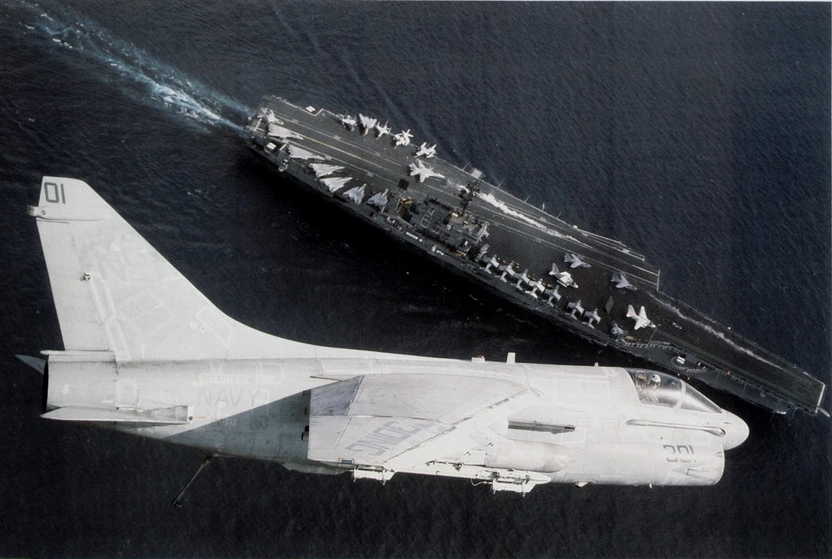“Everybody was lucky. We didn’t sink, no one got burned. We even managed to kick out the ‘enemy’ for a long time,” Vladimir Evseenko, K-314 Captain.
In March 1984 USS Kitty Hawk (CV-63) Carrier Strike Group (CSG), with more than 80 aircraft and eight escort ships, entered the Sea of Japan to take part in a joint U.S.-Korean exercise codenamed Team Spirit-84.
Such a powerful CSG not far from the Soviet Far East could not go unnoticed by the Soviet Pacific Fleet the Victor-Class nuclear submarine K-314 was ordered to follow the aircraft carrier.
On Mar. 14, Kitty Hawk was located by K-314. The Soviet submarine began the chase of the US Navy aircraft carrier which soon discovered that it was followed by K-314 and did what it could to break away from the Soviet submarine.
According to Russia Beyond, this cat-and-mouse game continued for a week, until something unexpected happened.
On Mar. 20, K-314 rose to a depth of just 10 meters after having lost track of USS Kitty Hawk due to bad weather.
Captain VladimirnEvseenko discovered that the entire USS Kitty Hawk CSG was only 4 to 5nkilometers away through the periscope. More alarmingly still, the Americans and K-314 were heading towards each other at full throttle.

Evseenko gave an immediate order to submerge, but it was too late. K-314 and USS Kitty Hawk collided.
“The first thought was that the conning tower had been destroyed and the submarine’s body was cut to pieces,” Evseenkonrecalled. “We checked the periscope and antennas – they were in order. No leaks were reported, and the mechanisms were ok. Then suddenly another strike! On the starboard side! We checked again – everything was in order…. We were trying to figure out what happened. It became clear that an aircraft carrier had rammed us. The second strike hit the propeller. The first one, most likely, bent the stabilator…”
The only option for K-314 was to surface and show themselves to the Americans. As its sailors were waiting for emergency tow ships, the Soviet submarine immediately received a visit from several U.S. Navy aircraft which inspected K-314 from above.
“We immediately launched two helicopters to see if we could render any assistance to them but the Soviet sub appeared to have suffered no extensive damage,” said Kitty Hawk’s commander, Captain David N. Rogers.
K-314’s propeller was heavily damaged as a result of the collision. Kitty Hawk instead had a huge hole in its bow, causing several thousand tons of jet fuel to leak into the sea; by sheer miracle, it did not explode.
Luckily, nor did the nuclear weapons on board the Soviet and American vessels detonate.
Close escorted by a US Navy frigate for part of the route, the Soviet Submarine was towed to the nearest Soviet naval base.
For USS Kitty Hawk, exercise Team Spirit was over: the aircraft carrier made its way to the port of Subic Bay for repair.
The Americans blamed the Soviet submarine captain for the incident, and the Soviet Naval command concurred. VladimirnEvseenko was suspended from the post of captain and continued his service on land.
Evseenko could not agree with such a verdict, since the incident had caused no loss of life or the submarine itself: “Everybody was lucky. We didn’t sink, no one got burned.”
“We even managed to kick out the ‘enemy’ for a long time,” he pointed out.
Photo by U.S. Navy

